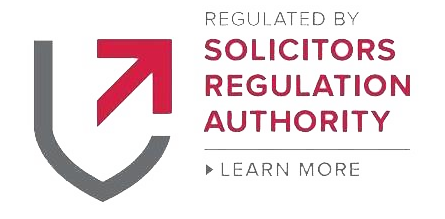COVID-19 & The CJRS
Do you have any questions about COVID-19 & The CJRS? Contact us today.
Points to be covered in this article
An Update
With the Government advising that we have now hopefully reached the peak in this terrible pandemic, and with many employees and employers getting used to the new “norm” of working life, whether this be working from home or working with social distancing measures or on Furlough Leave, many companies are now starting to look towards the next stage of this unprecedented situation.
It is somewhat of a strange concept that two months ago nobody had heard of the term Furlough, certainly within the context of Employment Law. A weekly survey issued by the British Chamber of Commerce has revealed that 71% of companies have furloughed at least some of their staff as part of the Coronavirus Job Retention Scheme. Given the speed within which the Coronavirus Act 2020 was passed, it will come as no surprise that it has presented numerous challenges for all, in terms of interpreting the intention and guidance of the Scheme. With no less than 5 iterations of guidance and a formal Directive from the Chancery to HMRC, it is fair to say that we are all now more or less informed of the terms which govern the Scheme.
However, the Scheme continues to be subject to interpretation, and the latest edition of the Employer’s Guidance on the Coronavirus Job Retention Scheme was published at the end of last week.
Furlough Leave & Union Representatives
A welcomed clarification in the latest guidance deals with employees who are Union or Non-Union representatives. You will be aware that whilst on Furlough Leave an employee must not undertake any work or services for the employer. However, employees who are Union or Non-Union representatives may undertake duties and activities for the purposes of individual or collective representation of employees or other workers. Accordingly, employers who need to consider engaging with their employees via the representatives of their staff can do so without being in breach of the Furlough Leave Scheme. The Union representative or Non-Union representative can also accompany a colleague during a Disciplinary or Grievance meeting or a redundancy consultation, again without being in breach.
Do you have any questions about The CJRS?
Contact us today.
Turning Our Attention to the Future
Like most catastrophes, we all focus on dealing with the here and now, but it is dealing effectively with the aftermath which will mean the difference between businesses surviving the effects of the pandemic or not. It is an unfortunate reality that for many companies, the furloughing of their employees may serve as a short-term coping strategy, but longer term difficult decisions may have to be made. With the talk of lockdown being gradually eased and with the Government currently considering some sectors being able to return to work it is imperative that business owners now look to the future and start their strategic planning now.
A knee-jerk reaction for a business may well involve a decision to make redundancies. This for many may well be unavoidable, but alternative solutions might be sought by thinking outside the box. As an alternative, a business could consider a variation to employee’s hours of work, or agreeing to a reduced salary for say 6 months. Any amendments to the contractual terms would need to be negotiated and agreed so as to avoid claims for constructive unfair dismissal or unlawful deduction of wage. However, for many employees, if faced with the prospect of being made redundant or perhaps agreeing to a shorter working week for say a period of 6 months, the latter may well be more attractive than the uncertainty which being made redundant will bring.
The “Violet” Concept
We did read with some interest an Article which featured in the Sunday Times about the “Violet” concept.
Philip Aldrick, Economics editor for the Times reported on the Violet concept, which has been proposed by a Fintech start-up founded by the supply chain finance entrepreneur David Brown. Mr Brown claims to have developed a quick way for companies to raise cheap funds and keep the debt off the books. Philip Aldrick reported that “Should it work, it could replace the Government’s Job Retention Scheme, which pays the wages of Furloughed Workers, saving the tax payer at least £30 billion a month. The idea hinges on a little known Government guarantee that covers 8 weeks of unpaid wage if an employer goes bust. At up to £538 a week, the support is similar to the £2,500 monthly cap on the Furlough Scheme. Under Violet, companies with cash flow problems can secure advances on staff salaries. With a blanket state guarantee on 8 weeks payroll, Banks can lend the funds, risk free and, because salary advances are off the balance sheet, other borrowing should not be affected”.
We must emphasise however that this is just a concept which is being proposed but one which if introduced could ease tremendously the inevitable financial strains companies will experience when trying to get back to the old “norm”.
We do of course continue to keep a watchful eye on any Government initiatives or developments which may assist our clients and the economy at large.
For now, we urge those company owners to start reviewing projections, rate of recovery and how you may bridge the gap between pre-Covid and post-Covid commercial life.
If you require any assistance with business planning, strategy, restructuring, redundancies or ways in which to try and avoid redundancies then please do get in touch with our Employment Specialists. We look forward to hearing from you soon.





